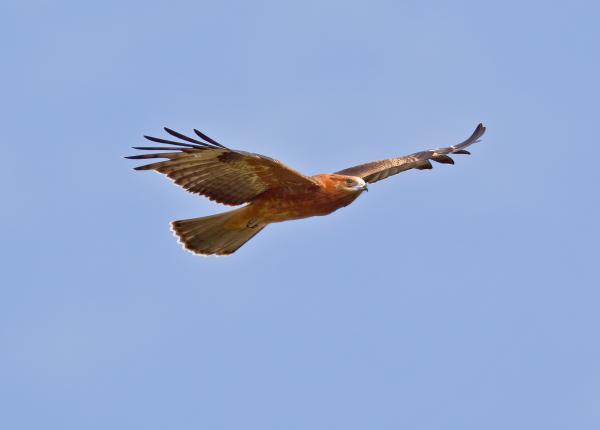Did You Know?
- The Square-tailed Kite is found only in Australia
- This species is also known as the Long-winged Kite
- There may be less than 10,000 individual Square-tailed Kites remaining
How The Peregrine Fund is Helping
Though The Peregrine Fund does not work directly with Square-tailed Kites, our efforts in scientific research, habitat conservation, education, and community development help conserve birds of prey around the world. We also supply literature to researchers from our avian research library, which helps scientists around the world gather and share important information on raptor conservation. And, finally, our support of the Global Raptor Information Network gives raptor researchers tools to more efficiently conduct their own studies while contributing to a global program. It also provides citizen scientists a way to participate in raptor science and conservation.
Where They Live
This lovely kite with a distinctively square tail is found only on the Australian continent. It can be seen soaring, hunting, and perching in coastal open forests and woodlands, and inland near riparian woodlands.
What They Do
The Square-tailed Kite is a very aerial species spending most of its time above or in the canopy. If you find yourself in Square-tailed Kite territory, be sure to look to the skies as this bird can often be seen flying leisurely over the canopy of open forest or gliding between the crowns of treesI Researchers have described it as being very "awkward and ungainly" when it is on the ground, and it very rarely spends time there, except when catching an occasional insect. Unlike other kites, it is not very gregarious, meaning it spends most of its time alone.
Why They Need our Help
Though this species is categorized as a species of Least Concern, its population is declining. Habitat loss and people collecting their eggs are to major threats it faces.
What They Eat
This species specializes in eating small birds, particularly their eggs and nestlings, but it will also take adult birds. In particular, it hunts honeyeaters and other passerine species that nest in foliage. But, the list of prey items doesn't stop there. This kite also eats insects, including grasshoppers, crickets, and beetles, as well as reptiles, tree frogs, and, rarely, small mammals. It is not known to feed on carrion.
When on the hunt, this species might drop suddenly to snatch prey from foliage or seize prey startled into flight. It is also known to tear wasp nests apart to feed on the larvae.
Nests, Eggs, and Young
Square-tailed Kites nest in a platform of sticks which they line with green leaves. They build the nest in the fork of a tree usually between 8-34 m above the ground. They seem to prefer nesting in forest or woodland.
When the time is right, the female will lay 2 or 3 eggs, but most commonly three. The eggs must be incubated for around 40 days. When the young hatch, they are covered in white down. But, the young nestlings will grow quickly and will be ready to fledge when they are between 59-65 days old. The young are dependent upon the adults for about one to two months after fledging.
Square-tailed Kite and the World Center for Birds of Prey
The World Center for Birds of Prey offers fun ways to learn about all birds of prey. Interactive activities, tours, interesting videos, and a children's room with activities from coloring sheets to quizzes to costumes await you. The visitor center has many live raptors on display, and in the fall you can observe some of the raptors showing off their flying skills during our Fall Flight Shows. This is a great chance to see birds of prey up close and learn about the wonderful and interesting adaptations they have in order to survive in their respective habitats. There is also a touch table with feathers and other natural objects available for exploration. Our knowledgeable staff is on hand year-round to answer any questions you may have about the Square-tailed Kite or any other bird of prey.
References:
Debus, S. and G. M. Kirwan (2020). Square-tailed Kite (Lophoictinia isura), version 1.0. In Birds of the World (J. del Hoyo, A. Elliott, J. Sargatal, D. A. Christie, and E. de Juana, Editors). Cornell Lab of Ornithology, Ithaca, NY, USA. https://doi.org/10.2173/bow.sqtkit1.01
Global Raptor Information Network. 2022. Species account: Square-tailed Kite Lophoictinia isura. Downloaded from http://www.globalraptors.org on 25 Jul. 2022










